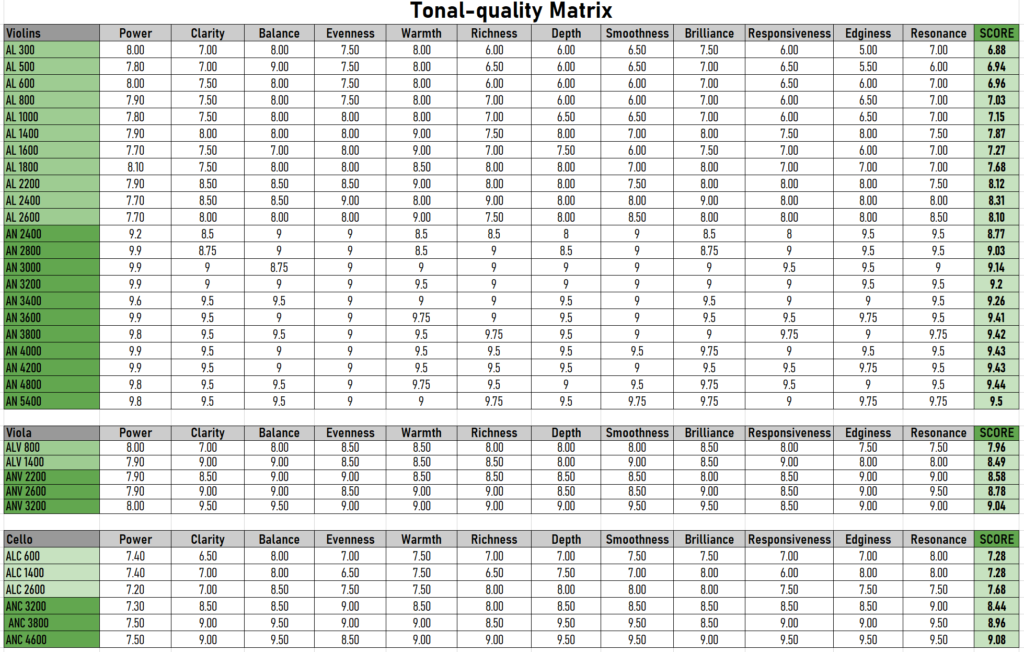We use a custom rating matrix to identify different strengths and provide a quality comparison between our instruments and other brands. The Violin Gallery’s Tonal-quality Matrix identifies the unique voice of each instrument. A quality instrument will score between a 5 and 10—popular online brands generally score much lower in the 2.5 to 5 point average range.
Each of the twelve tonal elements is rated separately and an average score is given to each instrument. The rating system judges power, clarity, balance, evenness, warmth, richness, depth, smoothness, brilliance, responsiveness, edginess, and resonance. And yes, they are all different and help identify whether a violin, viola, or cello has a good tone.
When practicing an instrument with a focus on mastering a particular piece of music, technique, or simply a desire to produce a pleasing tone, a quality instrument makes all the difference. Purchasing an instrument needs to be a thoughtful process. Investing in a violin, viola, or cello needs to have more important deciding factors than the cheapest online deal or the cuteness of the pink or blue-glitter finish. After all, you are buying an instrument for a musician, not a bowling ball or a bass boat.

